With the Transparency in Coverage Rule and No Surprises Act taking effect January 1, 2022, TPAs, ASOs, Insurers and employers of every kind should be focusing not just on meeting the requirements of the Rule and Act and avoiding fines of up to $100 per member per day, but also on increasing employee engagement with transparency tools. That’s because transparency will actually save a very significant percentage of what employers spend on healthcare, when employees are properly incentivized to use the tools being deployed.
While it’s not complicated, shopping for healthcare is likely a new behavior for many employees that can limit savings until they’re comfortable with the process. We find that companies who implement an employee engagement plan typically experience program engagement rates at least 20% higher than those who don’t. The higher the employee engagement, the higher the savings the company can actually realize.
Here are powerful elements of a strategy to increase employee engagement:
- Health Plan Design Matters – Nearly 6 in 10 people are concerned about rising healthcare costs, but if your company offers a low-deductible/PPO health plan, employees have little incentive to compare prices (or when they have $20 copays insulating them from the true cost of care). However, companies offering high deductible health plans (HDHPs) or consumer driven health plans (CDHPs) typically find employees have more “consumer interest” in shopping for care. Employees in these plans have a financial incentive to compare provider costs and quality to make more informed care decisions. Giving employees a price transparency solution allows them to reduce their out-of-pocket (OOP) expenses, maximize cost savings, and potentially keep some of their HSA savings for the future.
- Educate Employees and Assign a Program Champion – Healthcare pricing is complex, and many employees aren’t aware of the price variations in the healthcare marketplace or how to compare providers. Educating employees about how to search for and select high-quality, affordable care is an excellent step towards higher employee engagement. Following up with reminders on how to use cost comparison tools at regular intervals (at minimum every few months) will educate new employees and remind existing ones—who may not be frequent users of healthcare—of this important benefit. Designating a program champion (typically a senior HR role) to oversee the enrollment process and encourage employee participation will improve overall engagement rates and savings.
- Pick the Right Price Transparency Tool – Price transparency tool selection matters. Imagine you’re at your doctor’s office and are told to have a test or procedure done—how much effort would you go through to save money? Or, maybe you’re trying to financially plan for a future medical procedure for your child? Transparency tools offering 24/7 mobile access to local provider prices and quality generally have much higher employee engagement rates compared to those that require contacting a concierge service or those that only provide a rough “range” of prices. Consumers are used to comparing costs for most goods and services on their smartphones, so why should healthcare be any different? We encourage employees to install the transparency tool on their smartphone and “practice-shop” before going to the doctor. This exercise highlights market pricing variations and familiarizes them with the process before they need to shop. And don’t be surprised to find employees talking about procedure pricing variances of 1,000% or more around the office. These conversations can drive a culture of engagement and might help an employee who’s not using the tools to choose a different provider for a future procedure.
- Reward Use the Right Way – For companies with high-deductible health plans, rewarding shopping and savings behavior with HRA contributions reduces future employee out-of-pocket expenses, promotes medical consumer behavior, and reduces overall medical claims. This is a smarter approach over cash “spiffs” that tend to reward the wrong employee behavior by creating an incentive to go out and incur higher medical expenses, potentially driving up total claims cost in the process. Speak with your broker about plan designs that offer HSA and HRA options to offset higher deductibles. Both are powerful tools that can yield significant benefits today and act as a savings vehicle for the future with any unused funds (HSA).
- Use Reporting Tools to Unlock Additional Potential Savings – You’ll want to know how much your company is spending and saving on healthcare, how many employees are shopping, and also identify areas where you’re overspending. Comprehensive solutions that make it easy for you to analyze anonymized claims information can help your team discover procedures where additional savings opportunities exist.
Like any new benefit, price transparency tools will take training and time for your employees to adapt. However, it can help your employees get the most from a price transparency solution and help both them and the company to reduce healthcare costs. Price transparency empowers consumers to make more informed healthcare decisions by making it easier to compare procedure cost and quality on thousands of non-emergent medical procedures (e.g., lab tests, MRIs, x-rays, etc.) and capture significant savings in the process.
